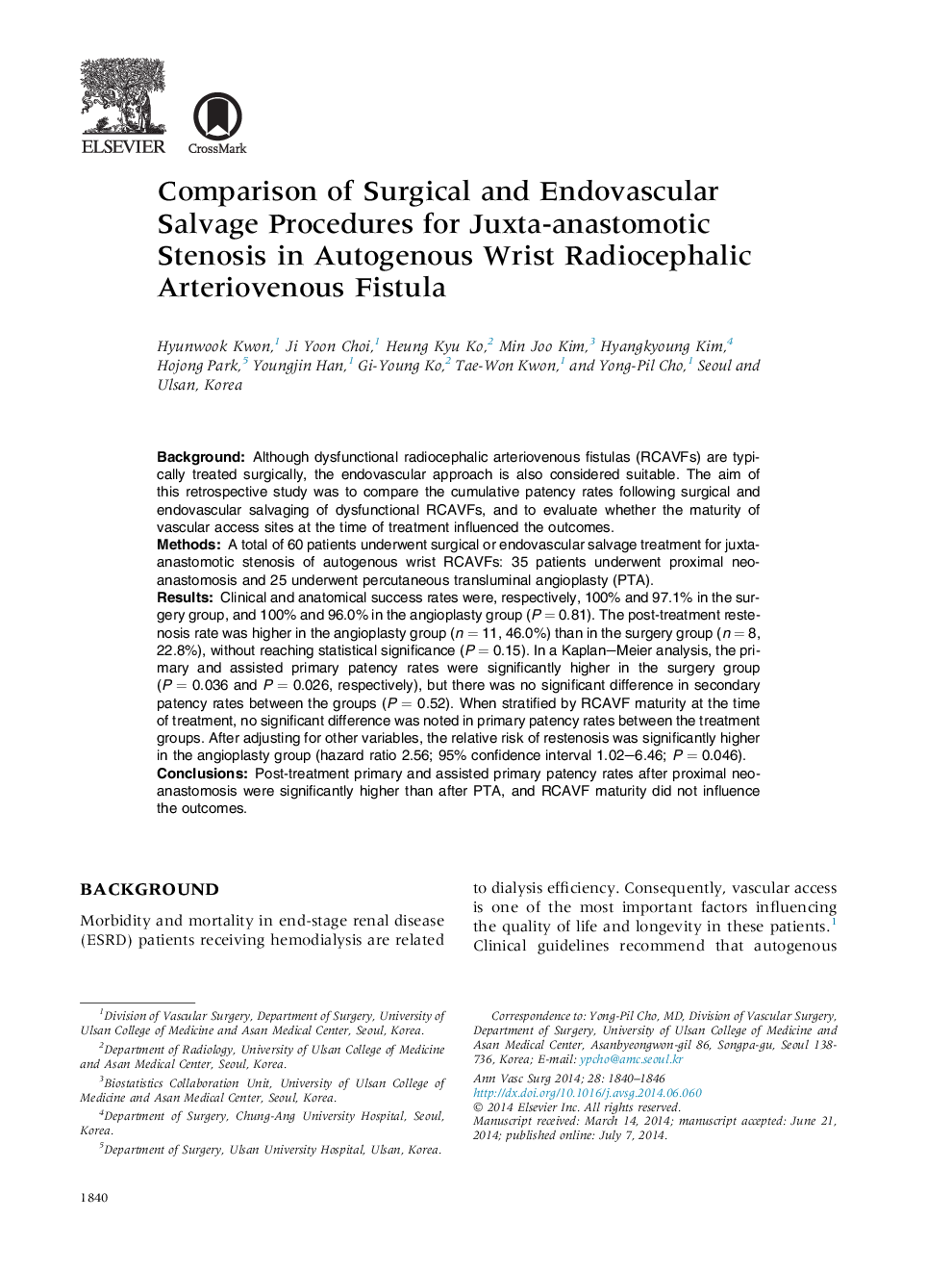| کد مقاله | کد نشریه | سال انتشار | مقاله انگلیسی | نسخه تمام متن |
|---|---|---|---|---|
| 2886013 | 1574207 | 2014 | 7 صفحه PDF | دانلود رایگان |
BackgroundAlthough dysfunctional radiocephalic arteriovenous fistulas (RCAVFs) are typically treated surgically, the endovascular approach is also considered suitable. The aim of this retrospective study was to compare the cumulative patency rates following surgical and endovascular salvaging of dysfunctional RCAVFs, and to evaluate whether the maturity of vascular access sites at the time of treatment influenced the outcomes.MethodsA total of 60 patients underwent surgical or endovascular salvage treatment for juxta-anastomotic stenosis of autogenous wrist RCAVFs: 35 patients underwent proximal neo-anastomosis and 25 underwent percutaneous transluminal angioplasty (PTA).ResultsClinical and anatomical success rates were, respectively, 100% and 97.1% in the surgery group, and 100% and 96.0% in the angioplasty group (P = 0.81). The post-treatment restenosis rate was higher in the angioplasty group (n = 11, 46.0%) than in the surgery group (n = 8, 22.8%), without reaching statistical significance (P = 0.15). In a Kaplan–Meier analysis, the primary and assisted primary patency rates were significantly higher in the surgery group (P = 0.036 and P = 0.026, respectively), but there was no significant difference in secondary patency rates between the groups (P = 0.52). When stratified by RCAVF maturity at the time of treatment, no significant difference was noted in primary patency rates between the treatment groups. After adjusting for other variables, the relative risk of restenosis was significantly higher in the angioplasty group (hazard ratio 2.56; 95% confidence interval 1.02–6.46; P = 0.046).ConclusionsPost-treatment primary and assisted primary patency rates after proximal neo-anastomosis were significantly higher than after PTA, and RCAVF maturity did not influence the outcomes.
Journal: Annals of Vascular Surgery - Volume 28, Issue 8, November 2014, Pages 1840–1846
